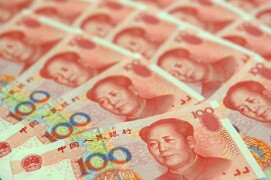The Chinese yuan is barely budging against its G10 currency competitors on Monday, despite the central bank showing its willingness to get serious about monetary easing. Investors may be trying to see if China can successfully hit the reboot button after last weekâs worse-than-expected gross domestic product (GDP) reading for the first quarter. It is evident that Beijing will employ every fiscal and monetary stimulus tool at its disposal to achieve growth in the coming quarters.
On Monday, the Peopleâs Bank of China (PBoC) cut its benchmark one-year loan prime rate (LPR) by 20 basis points from 4.05% to 3.85%. It also reduced the five-year LPR by ten basis points from 4.75% to 4.65%. This is the second time the PBoC has eased the lending benchmark, which is used for most new and outstanding loans, this year. The latest maneuver is projected to inject billions into the economy.
Economists had widely anticipated the move, especially after last weekâs 20-basis-point cut to the one-year medium-term lending facility interest rate that pumped $14 billion into the banking system. The central bank had accommodated monetary policy further by slashing the reserve requirement ratio (RRR) by 50 basis points.
Martin Rasmussen, China Economist at Capital Economics, told the South China Morning Post that these decisions might not seem like much. Still, they do send clear signals to the broader market.
It is easy to dismiss such a small fall in borrowing costs as insignificant for struggling firms. But the [Peopleâs Bank of China] has been easing monetary conditions through a range of other tools recently, too.
The latest rate decline should be viewed as yet another sign that authorities have become serious about monetary easing. As employment conditions remain weak and external demand held back by lockdowns, we think the Peopleâs Bank will take further steps to prop up activity.
These announcements may prove integral for a country that is attempting to rebound from an economic contraction. On Friday, Beijing announced that economic activity in the January-to-March period crashed 6.8%, which was worse than the median estimate. President Xi Jinping and his communist government are aiming for nothing less than 5% GDP growth in the April-to-June period.
In the coming days, several crucial manufacturing and non-manufacturing purchasing managersâ index (PMI) readings will be published. They are all forecast to come in below 50 â anything under this threshold suggests a contraction.
The USD/CNY currency pair was unchanged at 7.0735 at 16:51 GMT on Monday. The EUR/CNY edged up 0.05% to 7.6914, from an opening of 7.6875.
If you have any questions, comments, or opinions regarding the Chinese Yuan, feel free to post them using the commentary form below.
